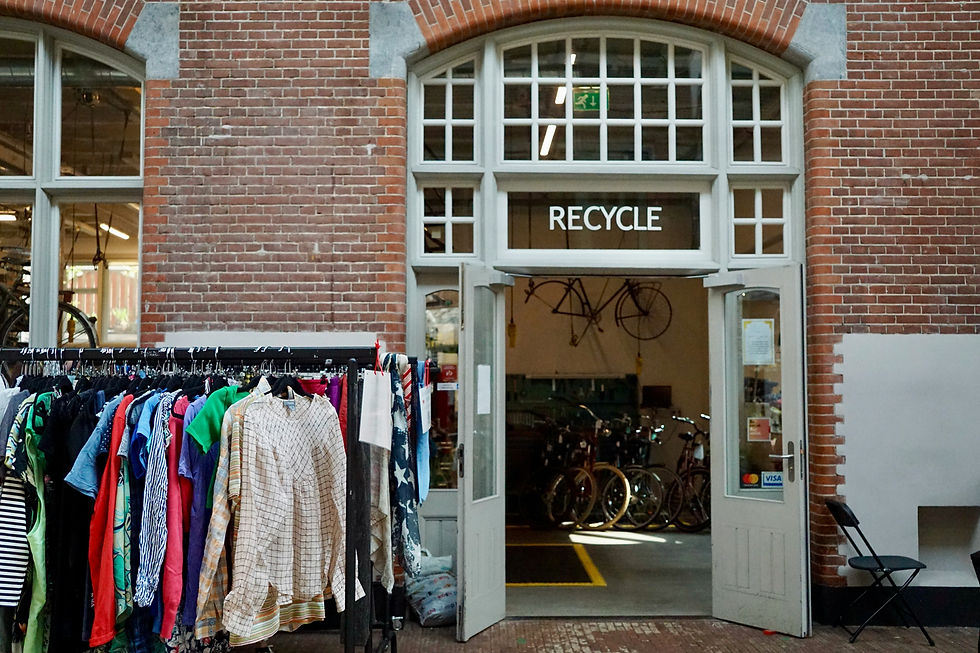The data behind a new consumer mindset - Zalando's case study.
- Anna anna@beamberlin.com
- Jul 24
- 3 min read
How shifting consumer behaviours are driving the future of circular fashion
The fashion industry is undergoing a profound transformation—driven not just by regulations or innovation, but by customers themselves. Consumers are changing how they shop, what they value, and how they expect brands to behave. A deep dive into Zalando’s 2025 white paper, “It Takes Many”, reveals compelling insights into the priorities of modern shoppers, particularly when it comes to sustainability, resale, and circularity.
This shift is also echoed across multiple global reports—from McKinsey’s State of Fashion series to Business of Fashion’s resale coverage. The key takeaway? A growing majority of fashion customers now care deeply about how their clothes are made, used, reused, and discarded.

Who are today’s conscious shoppers?
Zalando’s white paper, based on a Europe-wide study, shows that 83% of surveyed consumers consider sustainability important when purchasing fashion. This is not a niche—this is a majority.
Among Gen Z and Millennials, over 70% have already engaged in some form of second-hand shopping.
63% of customers expect brands to offer more transparency and information about their sustainability efforts.
According to Zalando’s SVP of Sustainability, Laura Coppen, “Sustainability is no longer an afterthought—it’s a core decision-making factor.”
This behavior isn’t limited to resale. Consumers are also exploring clothing rental, upcycling, and local repurposing. Zalando’s platform itself has seen a 400% increase in traffic to its Pre-owned section since its launch, underscoring how fast demand is growing.
Beyond Preaching: Circularity Must Be Practical
While customers care about circular fashion, convenience and price still dominate decision-making. That’s why 72% of consumers in Zalando’s study said they would buy pre-owned if it were easier to return, clean, or authenticate the garments.This echoes findings from a recent Business of Fashion analysis, where resale platform ThredUp reported a 95% surge in new users in Q1 2025 alone—largely due to economic pressure and easier-to-use interfaces.
As stated by Maxine Bédat, founder of the New Standard Institute, “The idea of resale has gone from fringe to foundational. It is now central to the way forward for retail.”
Meanwhile, brick-and-mortar resale is also booming: retailers from Levi’s to COS are opening up their own resale sections in stores to meet customers where they are. It’s estimated that by 2030, the second-hand apparel market will outpace fast fashion by 1.5x, according to ThredUp’s annual Resale Report.

🔄 What Does This Mean for Brands in 2025 and Beyond?
The data paints a clear picture:
Brands need to offer easy, transparent, and tech-enabled ways to engage in resale and circularity.
Customers expect sustainable services to be seamless—from return logistics to cleaning, repurposing, or reselling.
Circularity is not a luxury feature—it’s the cost of entry for future relevance.
Fashion brands are now navigating a new landscape where transparency, accountability, and circular innovation are being directly driven by end-users. And that shift is only accelerating.
In Summary - some numbers to remember:
83% of Zalando’s surveyed users value sustainability when shopping.
72% demand more convenience in buying pre-owned fashion.
400% growth in Zalando’s Pre-owned section traffic.
Platforms like ThredUp and The RealReal are seeing record user increases in 2025.
Gen Z and Millennials are leading the charge toward rental, resale, and repurposing.
Physical stores are joining the movement with branded second-hand sections.
As the European Commission sharpens its sustainability and transparency frameworks, and consumers grow louder in their demands, the brands that align with this momentum will thrive.
We’re already seeing this future unfold.
Sources:
Zalando White Paper 2025: It Takes Many
Business of Fashion: “Tariffs Push Resale Into the Spotlight” (2025)
McKinsey & Co: State of Fashion 2024
ThredUp Resale Report (2025)
Let’s make fashion truly circular—together!



Comments